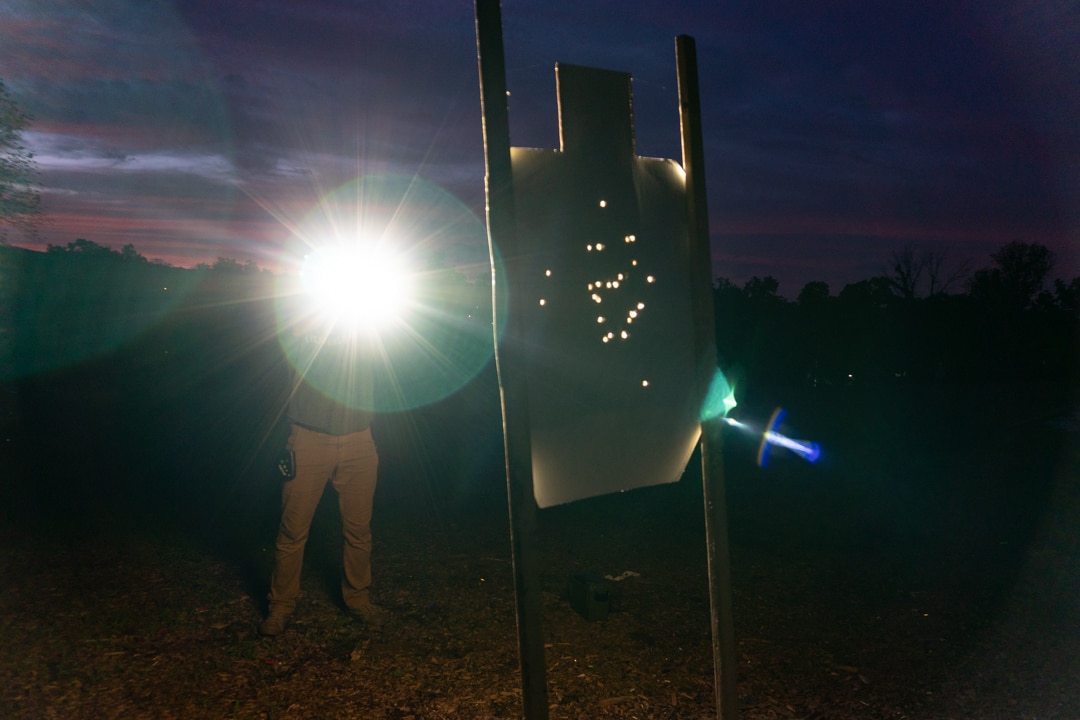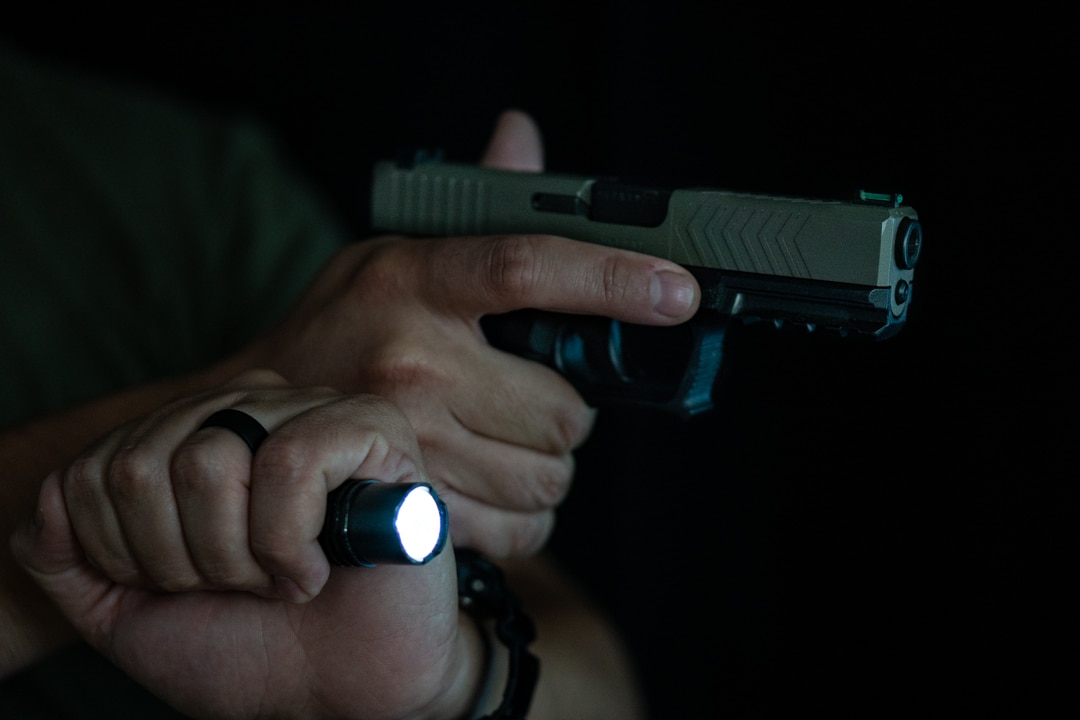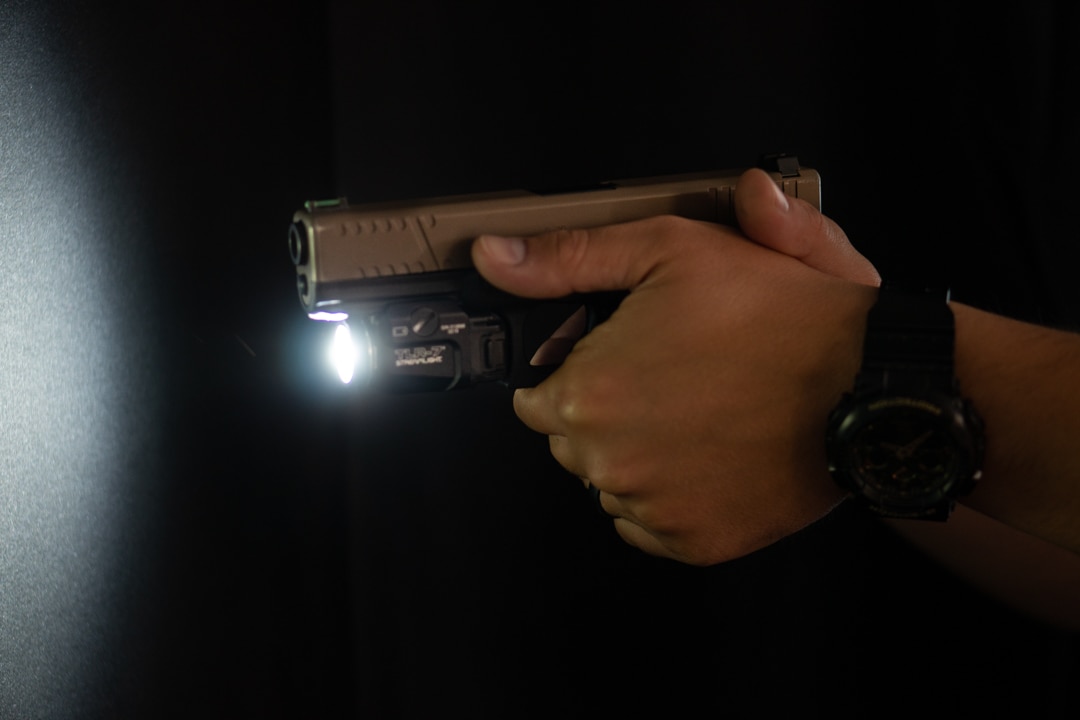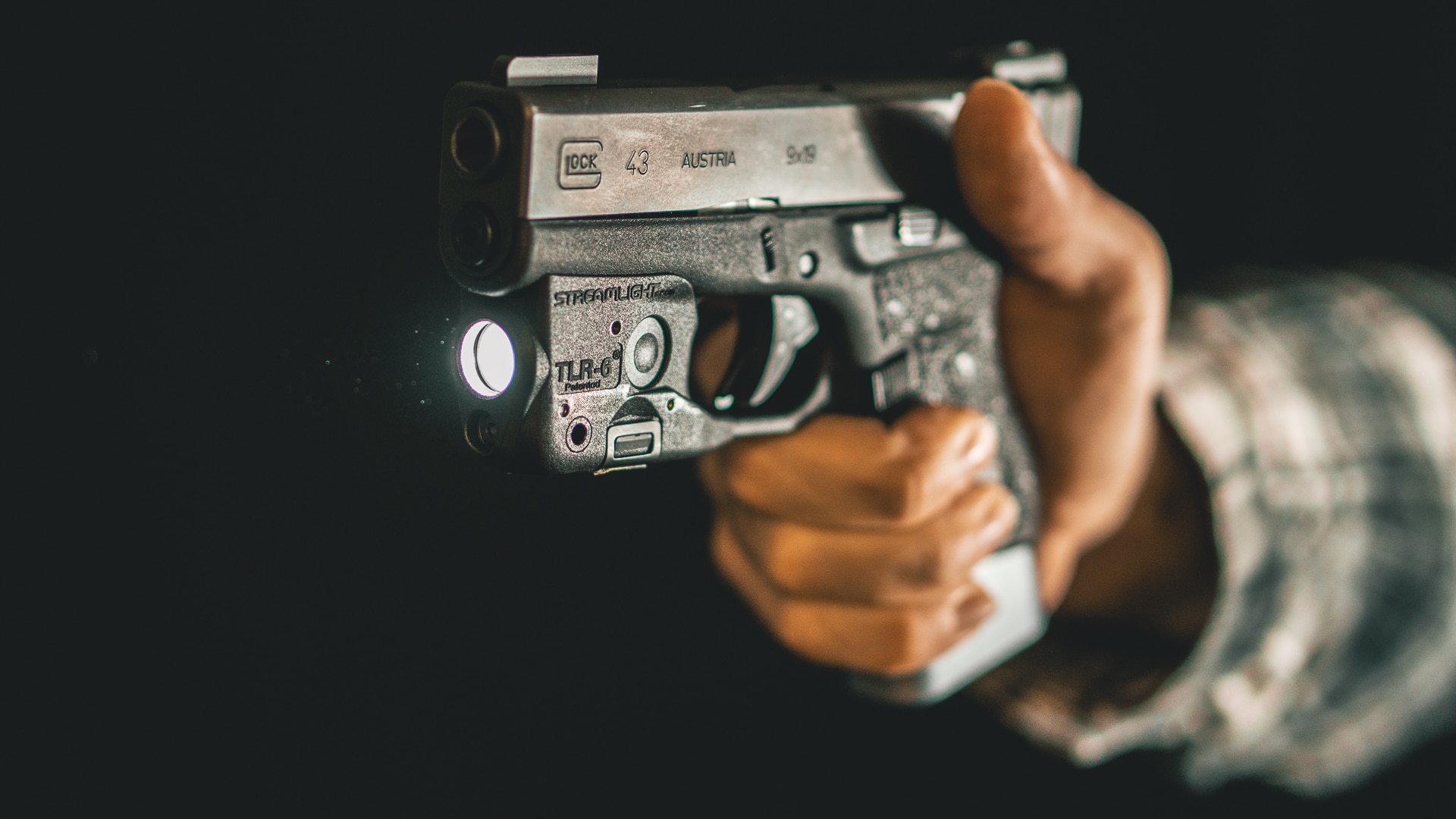Training with your firearm in low-light conditions is often pushed to the side. Some of the reasons are valid and some fall into the excuses category. The reality is that natural or ambient light is not always available. When it’s dark we lose the ability to see and ultimately process what exactly is happening. Flashlights and weapons-mounted lights afford us the ability to gather that information in which we cannot see. Whether or not you can operate that light proficiently and safely with your firearm is up to you.
Statistically violent crimes are more prone to happen during low-light hours. According to the US Department of Justice, adults 18 and older are more likely to commit violent crimes between the hours of 6 p.m. and 2 a.m. These violent crimes include murder, sexual assault, robbery, aggravated and simple assault.

Knowing how to use your light source effectively to your advantage is an important low-light skill. (Photo: Noah Alkinburgh/Guns.com)
Adding the manipulation of a light source in conjunction with your firearm isn’t as easy as flipping on a light switch. There are a lot of mechanics that need to work in coordination with one another to achieve the desired results. Of course, the light source you choose will dictate how you use it. Hand held lights will compromise your traditional two-handed grip no matter what grip technique you may choose (Cigar, Neck Index, Harries, Modified FBI, etc.). Weapon mounted lights whether on a long gun or handgun are convenient but still require you to activate them when needed. Everyone likes to argue about lumens, candela, and bezels until blue in the face, but have you put in the time in to know how to use it?
What are some training options?
A two day “Low-Light” class with a good instructor will provide a great foundation for low-light training. This class will hopefully ground you in strong fundamentals and give you some things to work on by yourself. Good instruction is in no shortage these days. Find a class that works for you. Then budget the time, ammo, and funds to take it. I understand that classes are not cheap, but I know for a fact that they are 100% worth it.
Dry firing isn’t as fun as putting real rounds on targets but we all know its a proven method of training. Professional shooters dry fire countless hours per week to improve their techniques.

The Harries Grip uses a reverse grip on the flashlight while using the back of your hands a contact point. (Photo Noah Alkinburgh/Guns.com)

The Streamlight TLR-7 is a new handgun light for 2018. This light is compact in size and puts out 500 Lumens. (Photo: Noah Alkinburgh/Guns.com)

The Streamlight TLR-6 is a light/laser combo that uses the frame of the Glock 43 as its attachment point. (Photo: Noah Alkinburgh/Guns.com)
Take the time to dry fire with your firearm and light in a dark area of your home. This is free to do and only requires you to set aside the time to do it. Dry firing in low light will give you some idea of what your light is capable of and how it works in conjunction with firearm manipulation and the grip of your choice. Then when you have the opportunity to do live training you will be ahead of the game.
Find a local range that allows you to train on your own during low-light hours, it’s worth the investment. These types of ranges can be hard to come by due to facility limitations and liability issues. Some indoor ranges will schedule “low-light” hours when they have enough staff to properly oversee range safety. In any case a range that you can practice live fire low-light techniques on will be extremely beneficial to your growth as a shooter.
Final Thoughts
The first time I trained with a firearm in the dark was an illuminating experience. The skills that I had worked so hard on during the day seemed to have the edge taken off them in the absence of light. I found myself doing everything slower and more deliberate. I made the mistake of assuming everything would work just the same as it did during day time hours. Continuing to train in the dark with the light and firearm of my choosing was the only way to adjust. I needed to gain experience and I encourage you to do the same. It might seem a little discouraging in the beginning but with dedication and a willingness to learn low-light fundamentals will be one more tool in your self-defense toolbox. We don’t get the luxury of choosing the lighting conditions when we’re thrown into a defensive force situation so please be prepared.
The post The importance of training with firearms in low-light (VIDEO) appeared first on Guns.com.
